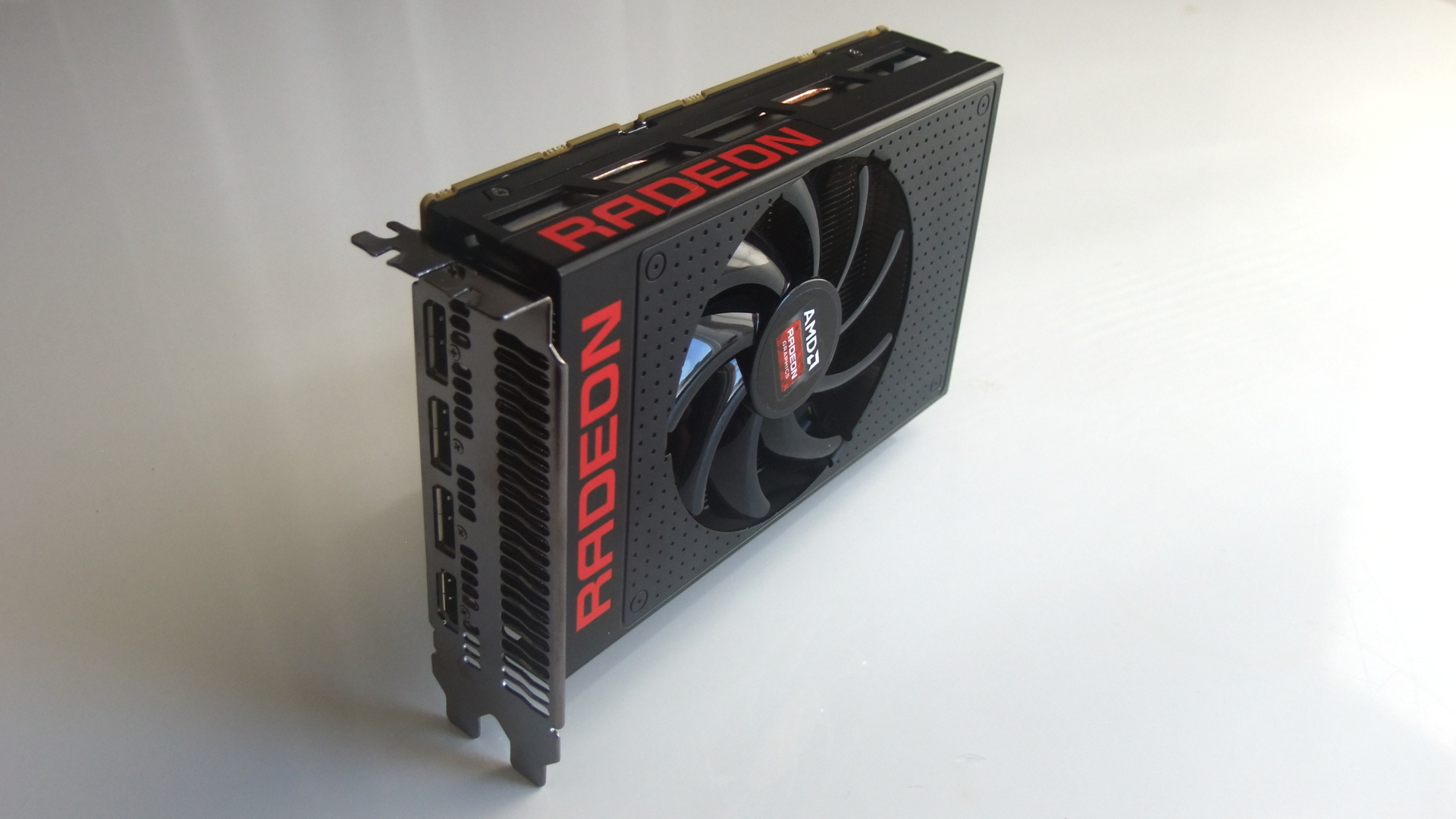Why you can trust TechRadar
While AMD is pegging the Radeon R9 Nano as a luxury card, a component that isn't meant to be about value for money, rather it's all about getting the maximum performance for a small form factor PC, we still have to give some thought to its price tag.
In the UK we're looking at a card that's at least £514 and in the US it's about $650 (around AU$920) at best.
That's around a tenner cheaper than the far quicker GTX 980 Ti with its 6GB of – admittedly less advanced – graphics memory, and hugely more expensive than the GTX 980 which it regularly trades benchmark blows with.
When you're building a new PC some semblance of value has to be brought into the equation.
We also have to tackle the elephant in the room. And that's quite an apt euphemism given we're talking about sentiments of scale…
AMD is talking about the Nano being the best mini-ITX card around, except we haven't really needed specifically designed mini-ITX cards for at least a year. Probably longer.
The chassis manufacturers have long been designing diminutive mini-ITX cases to house the latest, advanced miniature gaming motherboards that are still capable of giving enough space and cooling over to a full-size graphics card.
Admittedly we've sometimes had problems getting the chunky AMD cards to fit, but not so much on the green side of the graphics divide.
So, when we can already fit a cheaper, faster, lower-powered GTX 980 into an awesome mini-ITX chassis, like the EVGA Hadron Air or Corsair's gorgeous Carbide Air 240, what need do we have for the R9 Nano?
We liked
The engineering feat required to get such a massive graphics processor to fit – and run at decent speeds – into this 6-inch long slab of PCB is hugely impressive. We've got to give props to AMD for managing to squeeze the scalable Fiji GPU into this form factor.
And we've got quite a soft spot for the relatively new high-bandwidth memory getting fitted into the R9 Nano too. Though we do have some reservations about it…
The gaming performance, especially if we're talking about the more sensible 1440p resolutions, whether at 16:9 or 21:9, is fantastic. For all but the most demanding of game engines (jeez Attila, what are you trying to do to GPUs?!) you're looking to top 60 fps on average.
We disliked
Dislike is maybe too strong, as this is more a matter of confusion: who is the PC gamer that is so determined to pick a tiny, non-gaming centric mini-ITX chassis, which demands a 6-inch long card, that they would be happy to pay this much for the Nano?
The price is so high it seems AMD thinks that it's not a concern for the Nano's core demographic. But such luxury cards really need a far more compelling USP for them to be able to rock that 'money-no-object' aesthetic.
If you're looking to build a great mini-ITX rig you'll use one of the existing quality chassis on the market which can house a proper full-size GPU – like most can. At that point then you're going to be looking to see how much performance you can get out of it, and you'll either go for an Nvidia card because they're faster, or if you're a hardcore AMD fan you'll go for the water-cooled Fury X.
And with the first generation of HBM limited to just 4GB of video memory it can't be seen as an effective 4K gaming card as it simply runs dry of VRAM rather quickly.
We also can't ignore the significant coil whine we experienced with our sample. The Fury X reference cards had the same issue so maybe AMD's partners will sort that out, but it's still a concern. We're not sure if it's a symptom of the redesigned power componentry working hard to feed the Fiji XT GPU, but it can be quite insistent.
It's not constant, and seems more of an issue at 1080p settings, but it's definitely noticeable even when the card's embedded inside a chassis.
Final verdict
The AMD Radeon R9 Nano is definitely an impressive achievement and we love that AMD is at least trying to create something different. The scale is tiny and the performance great, but the price seems utterly prohibitive seeing as it's not really delivering something you can't get elsewhere, unless you're specifically talking in actual dimensions.
The Nano's physical size isn't enough given that GPU size is not really an issue in a small form factor gaming chassis unless you're talking triple-slot behemoths or super-long old AMD cards.
In the end then you will absolutely have to be dead set on a specific mini-ITX chassis which can only use 6-inch cards to think the R9 Nano is worth the outlay.
So the Radeon R9 Nano is a luxury card, and an impressively engineered one to boot, but we're still struggling to see exactly where it fits into an already crowded GPU marketplace that has cheaper, faster, lower-powered cards which fit mini-ITX clothing.
